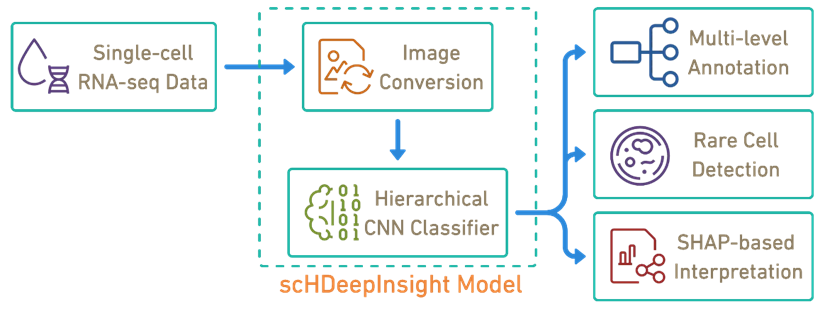
Researchers have developed an innovative software tool that harnesses artificial intelligence to enhance the study of the human immune system. A team from the University of Tokyo, led by Professor Tatsuhiko Tsunoda, created a framework named scHDeepInsight, which aims to provide a more consistent and rapid analysis of immune cells. This tool leverages vast amounts of genetic data to identify and categorize different immune cell types, uncovering patterns that have previously gone unnoticed.
The immune system is a complex network of cells essential for defending the body against various health threats. Its intricate mechanisms are vital for sustaining life, yet they are not infallible, as evidenced by diseases like AIDS and the recent challenges posed by the COVID-19 pandemic. Research in immunology has never been more critical, especially as scientists strive to understand the systemic responses to infections and autoimmune diseases.
Traditional methods of analyzing immune cells involve tedious manual observation, which is neither practical nor efficient given the sheer volume of data produced. While some automated tools exist, they often fall short in accuracy and consistency. In response, the team at the University of Tokyo set out to create a more effective solution.
Shangru Jia, the lead researcher, explained, “We present scHDeepInsight, an AI-based framework for rapidly and consistently identifying immune cells from the RNA of cells. Instead of viewing all cell types as unrelated, the system reflects the natural hierarchy of the immune system.” This framework incorporates a convolutional neural network (CNN) to convert cellular genetic profiles into images, allowing for the identification of both broad immune cell types and more specific subtypes.
In practical terms, scHDeepInsight dramatically reduces the time required for labeling. The system can label approximately 10,000 cells in just a few minutes, a task that could take several hours to days through manual methods. This remarkable speed, combined with superior consistency and accuracy, marks a significant advancement in immunology research.
There are three main components to scHDeepInsight. Firstly, hierarchical learning enables the model to mirror the immune system’s structure, distinguishing between various immune cell categories. Secondly, the transformation of gene data into two-dimensional images allows the CNN to detect subtle relationships among genes more effectively than traditional tabular data. Lastly, the integrated analytics can pinpoint which genes are most influential in specific behaviors, aligning them with known markers for further validation.
Jia noted, “A spreadsheet of gene numbers misses how genes relate to each other. When we map genes to pixels in an image so that related genes are placed nearby, the result is an image with meaningful structure.” This innovative approach not only enhances data interpretation but also improves the overall understanding of immune system dynamics.
Despite its potential, scHDeepInsight is currently a research tool rather than a fully-fledged diagnostic system. Its training has thus far focused solely on healthy cells, but applying the tool to patient samples can reveal deviations from this baseline. Such insights may illuminate new avenues for research and treatment, although clinical interpretation will necessitate further validation.
Jia emphasized the importance of generalizing and validating the model across diverse clinical samples, stating, “The model must be tested across varied trials and protocols. Integration into clinical workflows, along with regulatory requirements for transparency and reproducibility, are essential before routine use.”
For the present, scHDeepInsight is available as a downloadable package, enabling researchers to utilize it in their own work. The team aims to enhance the tool’s capabilities and explore applications beyond immune system-related cellular identification, broadening its impact across other biological domains.
One exciting aspect of scHDeepInsight’s functionality is its capacity to identify novel cell types. The model outputs probabilities for both broad and specific cell types, which can indicate the presence of previously unknown states. In preliminary analyses of brain immune datasets, these probabilities have highlighted regions rich in specialized microglia cells within the central nervous system.
As the research progresses, the team at the University of Tokyo is committed to refining scHDeepInsight, with the goal of establishing it as a reliable tool for clinical research. The hope is that, eventually, it will contribute to enhanced disease studies through precise immune system profiling. This advancement underscores the transformative potential of AI in biomedical research, paving the way for deeper understanding and innovative treatments in the field of immunology.






